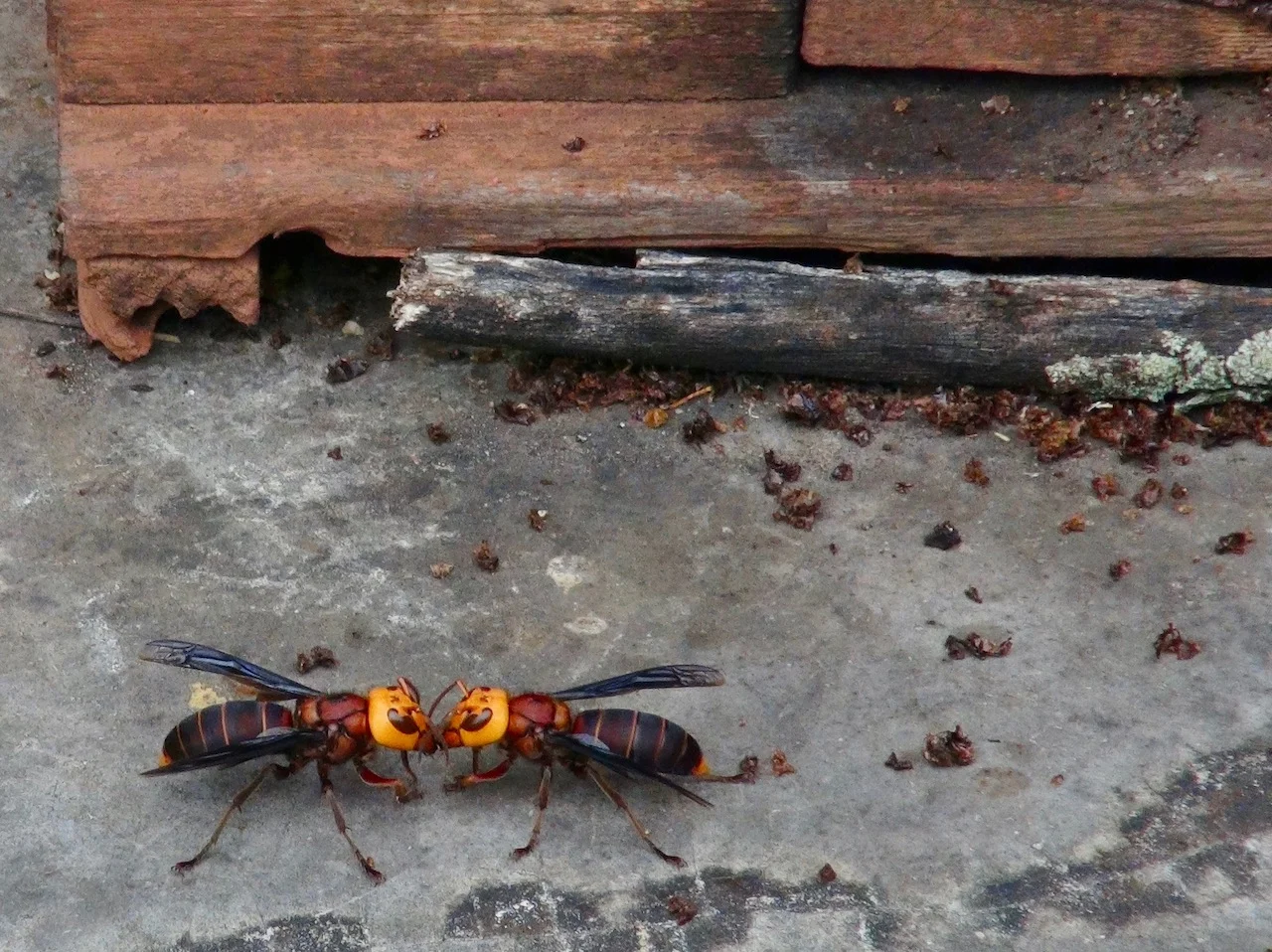
Pheromone traps may be effective tools to remove Asian giant hornets
The invasive Asian giant hornet has caused quite a stir since making its way into North America, but scientists may have figured out how to rapidly remove the insect before it becomes a widespread ecological problem.
While it's not completely clear how the invasive Asian giant hornet arrived in North America, new research may have unveiled a tool to remove it.
In China, researchers have found a way to detect the Asian giant hornet’s presence and potentially speed up its eradication before any significant ecological damage is done. In the journal, Current Biology, researchers identified three major aspects of the queen’s sex pheromone -- a finding that can be utilized as bait to trap and track the insects.
Visit our Complete Guide to Spring 2022 for an in-depth look at the Spring Forecast, tips to plan for it and much more!
The significant chemicals that were found in the sex pheromone were hexanoic acid, octanoic acid and decanoic acids, compounds that are readily available to be used in the field. They were discovered using gas chromatography and mass spectrometry, as well as two-year-long experiments.

Asian giant hornets outside a honeybee colony. (Dong Shihao/professor)
"We were surprised that the compounds that were identified were pretty simple and rather unexpected. Normally, researchers would expect for this kind of insect for the sex pheromone chemicals to be a little bit different," said James Nieh, a biological sciences professor and bee researcher at the University of California San Diego, in a recent interview with The Weather Network.
MALES CAPTURED IN TRAPS ARE HIGHLY SENSITIVE TO PHEROMONE
As part of the new examination, researchers laid traps near hornet nests in locales known for mating and captured male hornets, but no females or other species. During their experiments, scientists put the hornet’s neural activity to the test and discovered the male antennae are highly sensitive to the pheromone.
The idea for it stemmed from a previous inquiry Nieh was involved with, a different invasive hornet that is invading parts of Italy and France. He and his colleagues also indentified that sex pheromone of that species.
"When we first learned about the so-called 'murder hornets' coming to British Columbia and the United States, we thought it would be great if we could do a similar thing and figure out their sex pheromone, so that we could trap and potentially know where they were," said Nieh.
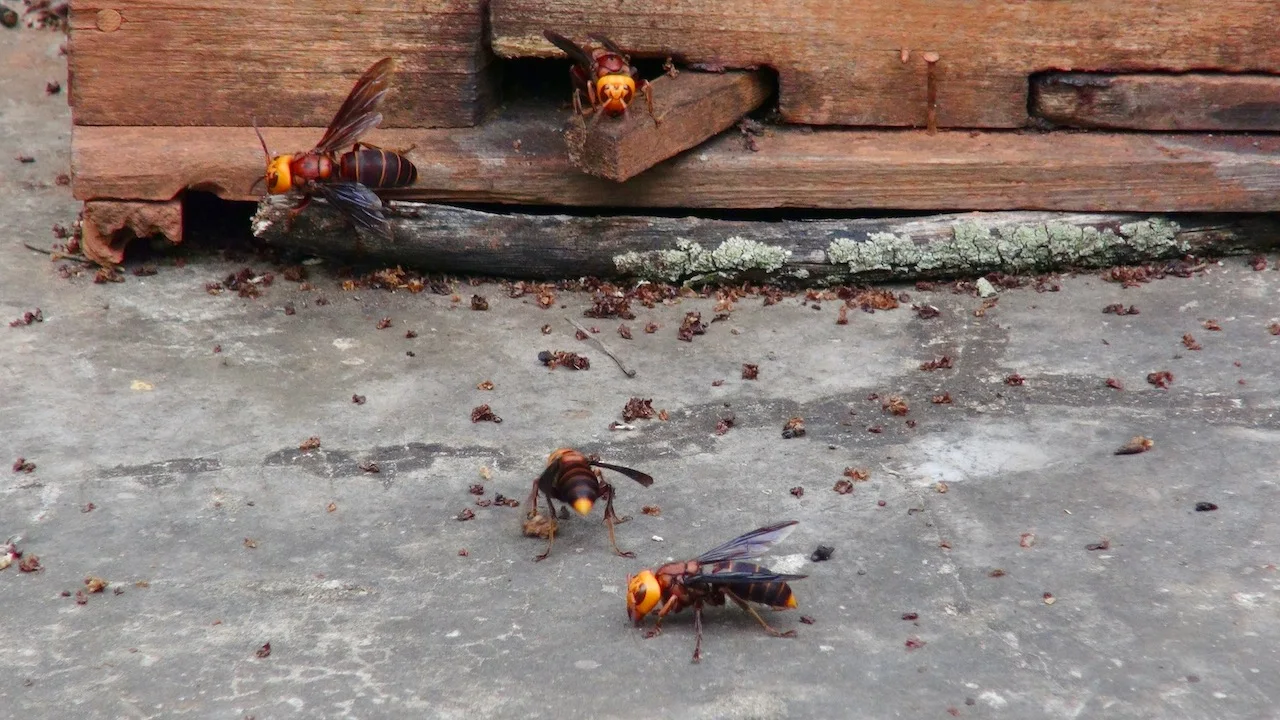
Multiple Asian giant hornets attacking a honeybee colony. (Dong Shihao/professor).
Insects that use sex pheromones, the males have a very strong motivation to find females before other males do, Nieh said, something that is part of the mating competition.
"Usually, the first male will gain the most reproduction when he finds the female. In the course of evolution, most insects that have sex pheromones, the males, their antennae specifically, are usually highly sensitive to it," said Nieh.
You can use sex pheromones to monitor the location of the hornets, he said, so incorporating them as a tracking system will be "very useful" for them and other pest insects because you don't need to look for them. They will come to the trap and get stuck there. All that is required to periodically check the traps.
If the traps are effective enough, it is possible to capture a significant proportion, Nieh added, especially if there aren't that many colonies in a given area with the males.
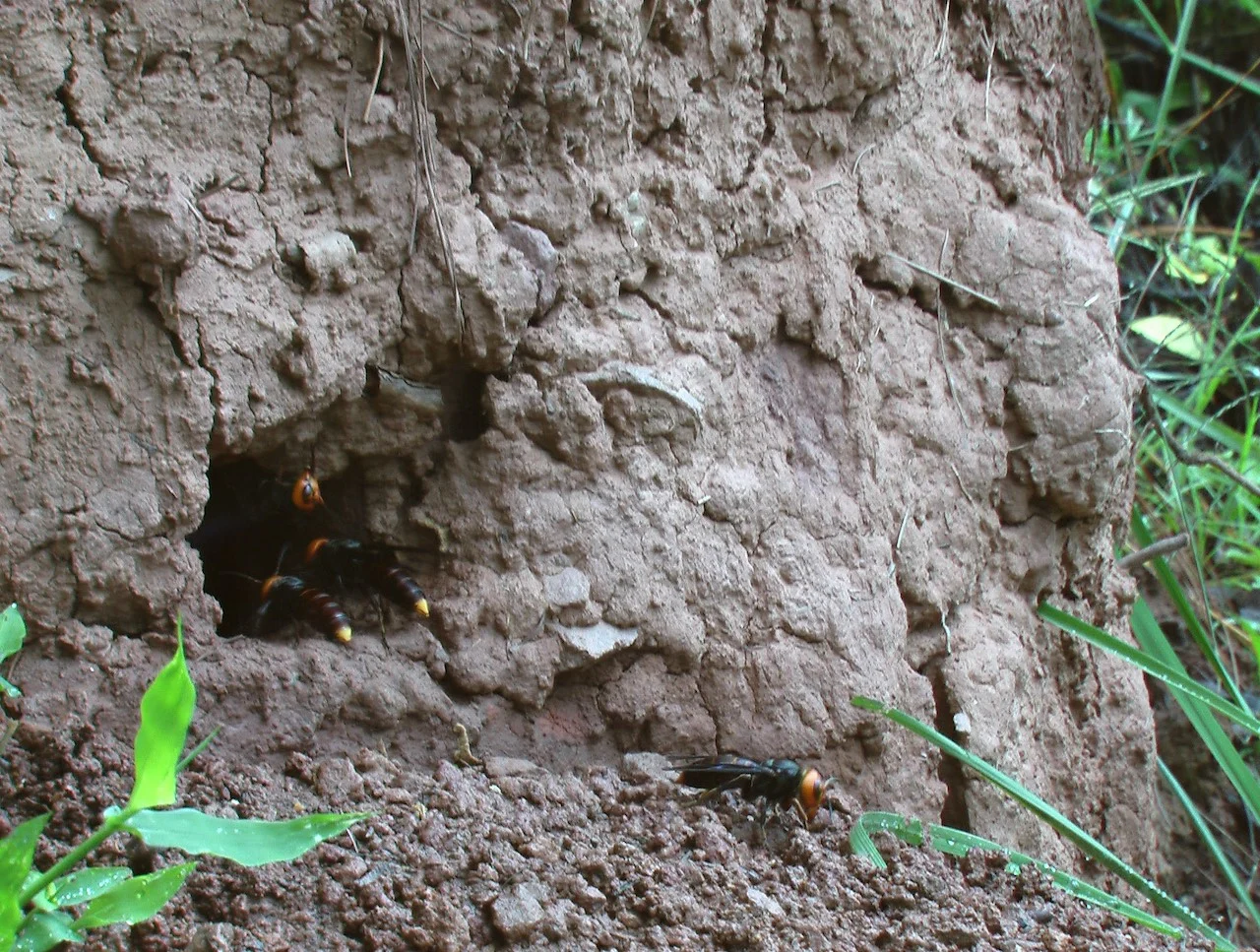
A nest entrance of Asian giant hornets in Kunming, China. (Dong Shihao/professor)
As a result, this could interfere with the reproduction because if the females don't mate with males, they can't start new colonies.
HAS THEIR NORTH AMERICA PRESENCE INCREASED?
When news of the Asian giant hornet's arrival to North America first surfaced, it didn't take long for public hysteria to develop. Much of it can be attributed to a media-created moniker that experts despise, murder hornets.
“My usual plea is that people should stop calling them ‘murder hornets’ because they are large and perhaps frightening but not truly murderous,” said Nieh, in the press release. “They are amazing social insects, but they don’t belong in North America and harm our critical bee populations, so we should remove them.”
As for the current status of the Asian giant hornet population in the continent, Nieh isn't aware of any news reports of late that they have expanded. He did cite a recent study probing their genetics, offering insight into how they arrived, which may have indicated multiple introductions, he said.
"This is really interesting because, previously, we assumed that this was just a one-off. But, based upon the latest genomic analysis, it happened more than once, which is troubling," said Nieh.
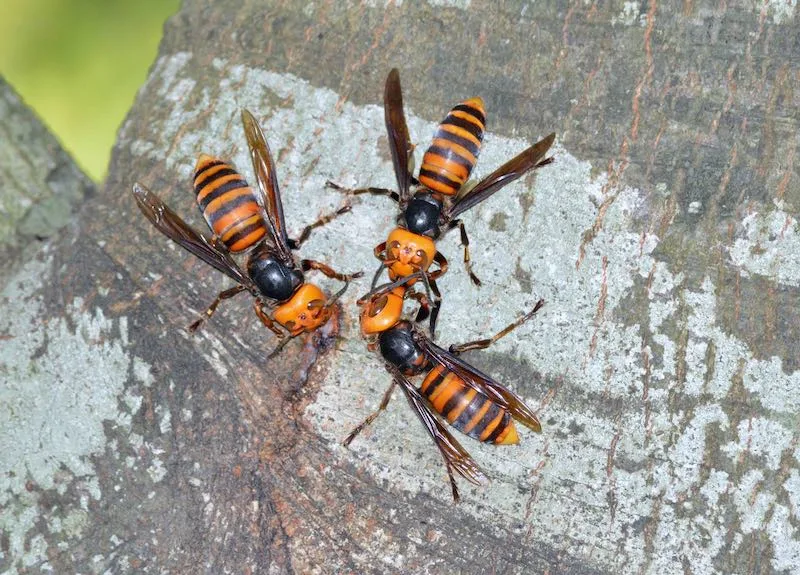
(Getty Images/kororokerokero)
Even though they've been found in B.C., the bee researcher said modelling used in other studies he looked at didn't foresee as much of a spread through the rest of Canada, at least partly due to a lack of a suitable climate for the insects.
"The climate in British Columbia is a little bit different. It's more temperate, more like that of Washington state. They also didn't predict that it would spread through the northern United States," said Nieh, cautioning, however, that if they somehow made it to the East Coast, they would find a favourable climate near New England and surrounding states.
"The hope is that somehow they don't get transported from Washington state or British Columbia to the East Coast, where they could really become a problem, and possibly an even larger area for them to expand," Nieh added.
HOW BEEKEEPERS CAN PROTECT COLONIES
For apiarists, Nieh suggests they look into monitoring projects that use food products as bait to trap any hornets that are in the area. Some of the items include alcohol, honey and fruit juice. But the best thing they can do is to keep a close eye on their colonies, as one of the signs of possible Asian giant hornet presence is a group of bees that have been mauled to death in front of the hives.
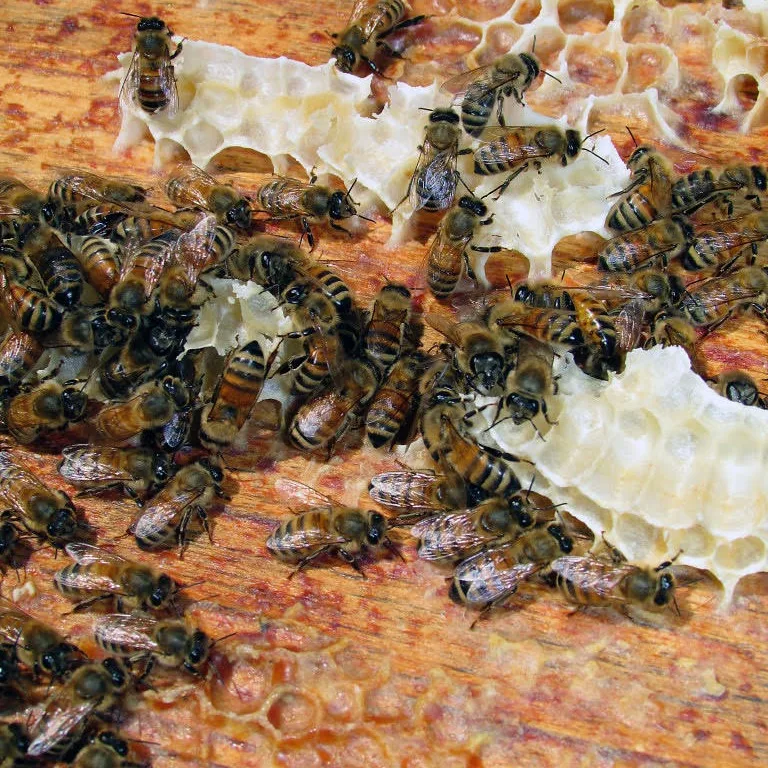
(Nathan Howes)
"So, if they do see that, the best thing is for them to contact their local [agricultural] office so they can get a professional to assess the situation," said Nieh.
It isn't just the honeybees that are at risk from the hornets -- wild species, too, are a target for the invasive insects, he said. "They feed on a wide variety of bees, and our native bees in North America are very important for our ecosystems. And they would have no defence against these hornets."
Thumbnail courtesy of professor Dong Shihao.
Follow Nathan Howes on Twitter.






